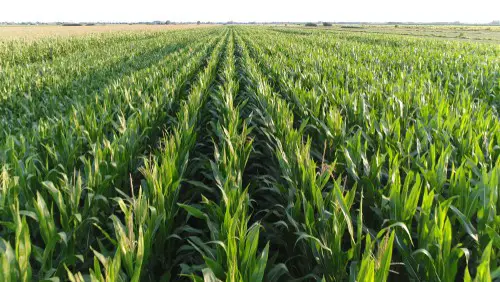Aerial parts of a plant refer to the structures of a plant that are above ground level. These structures include stems, leaves, flowers, fruits, and seeds. Aerial parts of a plant are essential for the survival and growth of the plant, as they are responsible for photosynthesis, reproduction, and nutrient absorption.
Understanding aerial parts of a plant is crucial for anyone interested in botany, horticulture, or agriculture. Different types of aerial plants have unique characteristics that allow them to adapt and survive in their environments.
Some aerial plants, for example, grow on other plants or trees and do not require soil to grow. Others have specialized root systems that enable them to absorb water and nutrients from the air.
Key Takeaways
- Aerial parts of a plant include stems, leaves, flowers, fruits, and seeds.
- Different types of aerial plants have unique characteristics that allow them to adapt and survive in their environments.
- Understanding aerial parts of a plant is crucial for anyone interested in botany, horticulture, or agriculture.
More on this category:
- What Are the Characteristics of Plants Worksheet Answer Key?
- What are the Corn Dog Plants Called?
- What are the Disadvantages of a Snake Plant?
Understanding Aerial Parts of a Plant

Plants are complex organisms that come in different shapes and sizes. Understanding the different parts of a plant is important for gardeners, farmers, and botanists alike.
The aerial parts of a plant are those parts that grow above the ground and are exposed to air and sunlight. These parts are responsible for photosynthesis, reproduction, and other essential functions.
Identifying Different Aerial Parts
The aerial parts of a plant include the leaves, flowers, stem, petioles, fruits, branches, nodes, and trichomes. Each of these parts has a unique structure and function.
- Leaves: Leaves are the flattened structures that grow from the stem and are responsible for photosynthesis. They are attached to the stem by petioles and come in different shapes and sizes. Leaves can be simple or compound, and they are covered with a waxy layer called the cuticle to prevent water loss.
- Flowers: Flowers are the reproductive structures of a plant. They come in different colors, shapes, and sizes and are responsible for attracting pollinators. Flowers contain male and female reproductive organs, and they produce seeds after fertilization.
- Stem: The stem is the main structural axis of a plant. It supports the leaves, flowers, and fruits and transports water and nutrients from the roots to the leaves. The stem can be woody or herbaceous and can grow horizontally or vertically.
- Petioles: Petioles are the stalks that attach the leaves to the stem. They allow the leaves to move and adjust their position to maximize sunlight exposure.
- Fruits: Fruits are the mature ovaries of a plant. They contain seeds and are responsible for seed dispersal. Fruits come in different shapes and sizes and can be fleshy or dry.
- Branches: Branches are secondary stems that grow from the main stem. They support the leaves, flowers, and fruits and can grow in different directions.
- Nodes: Nodes are the points where leaves, branches, and buds emerge from the stem. They are important for plant growth and development.
- Trichomes: Trichomes are hair-like structures that grow on the surface of leaves, stems, and flowers. They can protect the plant from pests and reduce water loss.
Functions and Importance of Aerial Parts
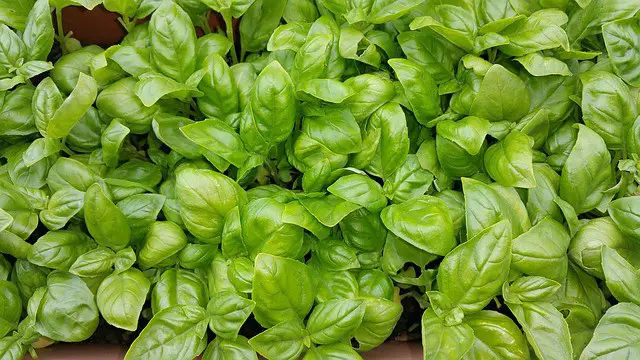
The aerial parts of a plant are essential for plant growth, development, and survival. They have different functions and are adapted to different environmental conditions.
- Photosynthesis: Leaves are responsible for photosynthesis, the process by which plants convert sunlight into energy. This energy is used for plant growth and development.
- Reproduction: Flowers are responsible for reproduction, the process by which plants produce seeds. Seeds are important for plant survival and propagation.
- Support: The stem and branches provide support for the leaves, flowers, and fruits. They allow the plant to grow vertically and maximize sunlight exposure.
- Transportation: The stem transports water and nutrients from the roots to the leaves. This is essential for plant growth and development.
- Protection: Trichomes and other structures can protect the plant from pests, disease, and environmental stress.
Aerial Plants and Their Unique Characteristics
Aerial plants, also known as epiphytes, are plants that grow on other plants or objects without being parasitic. These plants are commonly found in tropical and equatorial regions, especially in rainforests, where they can grow on trees, rocks, sand, cacti, and wires.
Unlike terrestrial plants, aerial plants do not grow in soil and have unique adaptations that allow them to survive in their environment.
One of the most distinctive features of aerial plants is their aerial roots. These roots are used to anchor the plant to its host and absorb water and nutrients from the air.
Aerial roots can be thick and fleshy, like those of Guzmania and Vriesia, or thin and wiry, like those of Neoregelia. In some cases, aerial roots can also be used to store water, enabling the plant to survive during periods of drought.
Another characteristic of aerial plants is their ability to reduce transpiration. Transpiration is the process by which plants lose water through their leaves.
Aerial plants have adapted to their environment by reducing the surface area of their leaves, which in turn reduces water loss. Some aerial plants have also developed specialized cells called trichomes, which help to retain moisture.
Air plants, also known as Tillandsia, are a type of aerial plant that do not require soil or water to survive. These plants absorb moisture and nutrients from the air through their leaves. Air plants are often used in terrariums and as decorative houseplants due to their unique appearance and low maintenance requirements.
Bromeliads are another type of aerial plant that are known for their colorful and exotic flowers. These plants are native to Central and South America and are often found growing on trees in rainforests.
Bromeliads have adapted to their environment by developing a rosette of leaves that collects water, which in turn provides a habitat for other organisms.
Adaptation and Survival Strategies of Aerial Plants
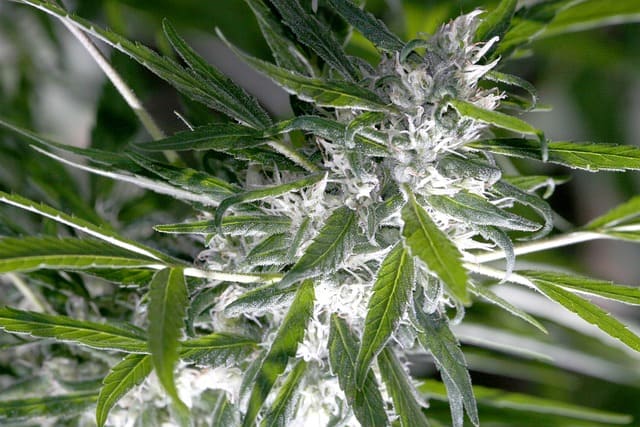
Aerial plants are plants that grow above the ground, either on other plants or on inanimate objects. These plants have unique adaptations that allow them to survive and thrive in their environment.
One of the most important adaptations of aerial plants is their ability to absorb moisture and nutrients from the air. Since they do not have access to soil, they have developed specialized structures such as trichomes, which are small hair-like structures that absorb moisture and nutrients from the air.
Aerial plants also have adaptations to protect themselves from harsh weather conditions such as wind, rain, and cold. Some plants have scurfy leaf surfaces that help to reduce water loss during dry conditions, while others have waxy coatings that help to repel water during rainy conditions.
In addition to protecting themselves from harsh weather conditions, aerial plants have also developed adaptations to take advantage of favorable environmental conditions.
For example, some plants have developed the ability to grow towards sources of sunlight, while others have adaptations that help them to take advantage of air movement to disperse their seeds.
Aerial plants have also developed strategies to protect themselves from predators and other threats. Some plants have developed thorns or spines to deter herbivores, while others have developed toxic compounds to deter predators.
Nutrient and Water Absorption in Aerial Plants
Aerial plants are unique in that their roots are not always in contact with soil. As a result, they have evolved specialized structures to absorb nutrients and moisture from the air.
Aerial roots are one such structure. They are roots that grow above the ground and are exposed to the air. They are commonly found in epiphytes, which are plants that grow on other plants, and in plants that live in marshy or swampy environments.
Aerial roots have a spongy outer layer that allows them to absorb moisture and nutrients from the air.
In addition to aerial roots, some aerial plants have specialized leaves that can absorb nutrients and water. These leaves are covered in small hairs that trap moisture from the air. The hairs also help to filter out impurities, ensuring that the plant only absorbs clean, filtered water.
It is important to note that not all aerial plants absorb nutrients and moisture from the air. Some still rely on their roots to absorb nutrients from the soil.
However, even in these plants, the aerial parts can play a role in nutrient absorption. For example, some plants have leaves that can absorb nutrients from rainwater or dew that collects on them.
When it comes to watering aerial plants, it is important to use filtered water or well-drained soil. Tap water can contain chlorine and other chemicals that can be harmful to the plant. Well-drained soil allows excess water to drain away from the roots, preventing waterlogging and root rot.
Cultivating Aerial Plants
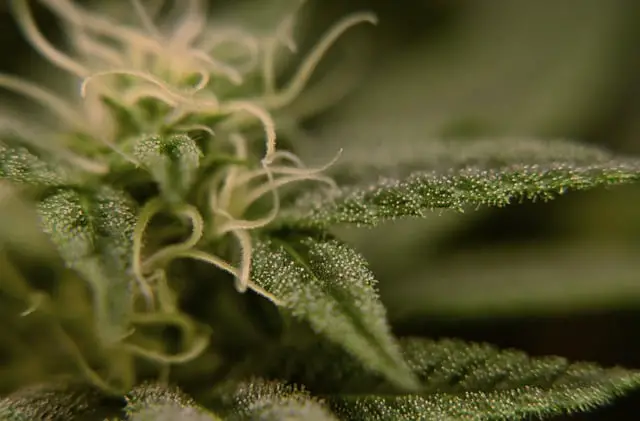
Aerial plants are fascinating and unique plants that can be cultivated in a variety of ways. These plants are commonly called air plants because they do not require soil to grow. Instead, they absorb water and nutrients through small hairs on their leaves from rain, fog, and even dust.
One way to cultivate aerial plants is by using seeds. Some aerial plants, such as Spanish moss and green moss mushroom, produce seeds that can be collected and planted. However, it’s important to note that not all aerial plants produce seeds, and some are propagated through other methods.
Another way to cultivate aerial plants is by using vines. Ivy is a popular vine that can be grown in a garden or in a glass globe. When grown in a garden, ivy can climb trees and walls, creating a beautiful green backdrop. When grown in a glass globe, ivy can be a stunning centerpiece that adds a touch of nature to any room.
Cacti are another type of aerial plant that can be cultivated. These plants are native to arid regions and can grow on rocks and other surfaces that do not hold water for long periods of time. When cultivating cacti, it’s important to use well-draining soil and to water them with soft water to prevent calcium buildup.
Stag-horn ferns and mangrove trees are also popular aerial plants that can be cultivated. Stag-horn ferns are epiphytic plants that can be grown on wires or in baskets. Mangrove trees are unique in that they have aerial roots that can be used for breathing and absorbing nutrients from the atmosphere.
When cultivating aerial plants, it’s important to consider the environment in which they will be grown. Some aerial plants, such as pand banyan trees, are native to South America and require a warm, humid climate. Others, such as Spanish moss, can be grown in a variety of environments.
Aerial plants can be found at most garden centers and can be a beautiful addition to any home or garden. With a little bit of knowledge and care, anyone can cultivate these unique and fascinating plants.
Aerial Parts in Food and Beverage Industry
Aerial parts of plants are an essential ingredient in the food and beverage industry. They are widely used for their unique flavors, aromas, and medicinal properties. Here are some of the most common uses of aerial parts in the food and beverage industry:
1. Tea
Aerial parts of plants such as chamomile, mint, and lavender are used to make herbal teas. These teas are known for their soothing and calming effects on the body.
Chamomile tea, for instance, is known to reduce inflammation and promote relaxation. Mint tea is known for its refreshing and cooling properties, making it a popular choice during the summer months.
2. Flavor
Aerial parts of plants are also used as a flavoring agent in various food products. For instance, basil leaves are used to flavor pasta sauces, pizzas, and salads. Thyme is used to flavor soups, stews, and roasted meats. Rosemary is used to flavor roasted vegetables, potatoes, and meats.
3. Vegetable
Aerial parts of plants such as broccoli, cauliflower, and Brussels sprouts are used as vegetables in various cuisines. These vegetables are known for their high nutritional value and are often eaten raw or cooked. For instance, broccoli is a good source of vitamin C, vitamin K, and fiber, making it a popular vegetable in many households.
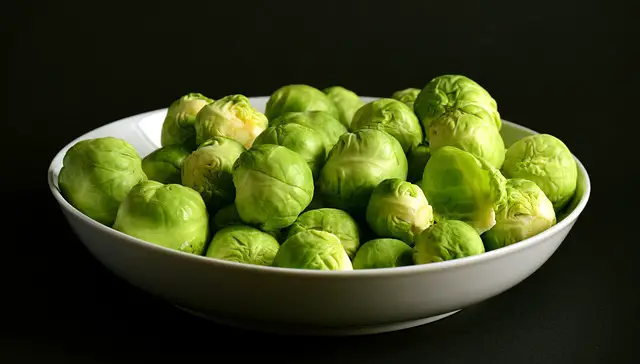
4. Herb
Aerial parts of plants are used as herbs in various cuisines. For instance, cilantro leaves are used in Mexican and Indian cuisines to add flavor to dishes such as salsa, guacamole, and chutneys. Parsley is used in Mediterranean and Middle Eastern cuisines to add flavor to dishes such as tabbouleh, hummus, and falafel.
5. Hops
Aerial parts of the hop plant are used to flavor and preserve beer. Hops are added to the boiling wort during the beer-making process to impart bitterness, flavor, and aroma to the beer. Hops also act as a natural preservative, helping to extend the shelf life of beer.
Medicinal Uses of Aerial Parts
Aerial parts of plants are those parts that grow above the ground, such as leaves, stems, flowers, and fruits. These parts have been used for medicinal purposes for centuries. In this section, we will explore some of the medicinal uses of aerial parts of plants.
1. Anti-inflammatory Properties
Many aerial parts of plants contain compounds that have anti-inflammatory properties. For example, flavonoids are a group of compounds found in many plants that have been shown to have anti-inflammatory effects. These compounds can help reduce inflammation in the body, which can help relieve pain and improve overall health.
2. Herbal Medicine
Aerial parts of plants have been used in herbal medicine for centuries. Many cultures around the world have used plants to treat a variety of ailments. For example, in traditional Chinese medicine, plants such as ginseng and astragalus are used to boost the immune system and improve overall health.
3. Aroma Therapy
Aerial parts of plants are also used in aroma therapy. Essential oils are extracted from plants and used to promote relaxation, reduce stress, and improve mood. For example, lavender essential oil is often used to promote relaxation and reduce stress.
4. Extraction for Medicinal Purposes
Aerial parts of plants can also be extracted for medicinal purposes. For example, the aerial parts of Andrographis paniculata have been used for centuries in Asia as traditional medicine for the treatment of various ailments, including stomachaches, inflammation, pyrexia, and intermittent fevers.
The whole plant has been used for several applications such as anti-dote for snake-bite and more.
5. MS and IR
Aerial parts of plants have been used in MS and IR research. For example, a study on the aerial parts of Vervain found that they have antioxidant and anti-inflammatory properties, which can help reduce oxidative stress and inflammation in the body.
Another study on the aerial parts of Horsetail found that they have diuretic activity, which can help improve kidney function.
Role of Aerial Parts in Plant Reproduction
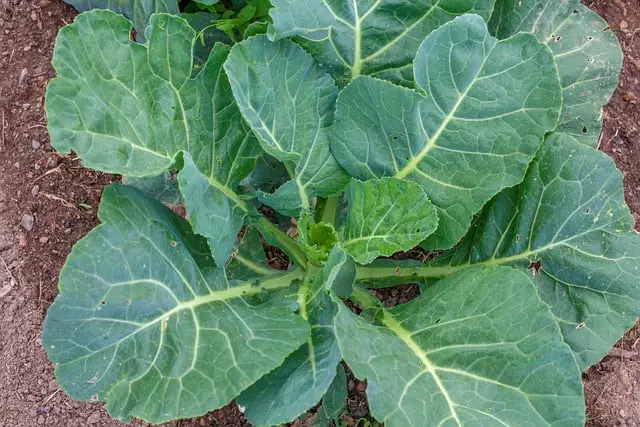
Aerial parts of a plant play a crucial role in plant reproduction. The aerial parts of a plant are the structures above the ground, including stems, leaves, flowers, and fruits. These parts are essential for the survival and propagation of the species.
1. Sexual Reproduction
The flowers are the reproductive organs of a plant. They contain both male and female reproductive organs, which are responsible for sexual reproduction. The male reproductive organ is called the stamen, which produces pollen. The female reproductive organ is called the pistil, which contains the ovary where the embryo develops.
2. Embryo Development
After fertilization, the embryo develops inside the ovary. The ovary then develops into a fruit, which contains seeds. The seeds contain the embryo, which can grow into a new plant. The aerial parts of the plant, such as the fruit and seeds, are important for the propagation of the species.
3. Tendrils
Some plants have aerial parts that are modified for other purposes, such as tendrils. Tendrils are thin, wiry structures that are used for support and attachment. They help the plant climb and support its weight. Tendrils are found in many types of plants, including vines and some shrubs.
4. Chlorophyll
Leaves are another important aerial part of a plant. They are responsible for photosynthesis, the process by which plants convert sunlight into energy. Chlorophyll, which is found in the leaves, absorbs the energy from the sun and uses it to produce glucose, which the plant uses for energy.
Frequently Asked Questions
What are the different types of aerial plant parts?
The different types of aerial plant parts include stems, leaves, petioles, flowers, fruits, and seeds. The stem is the main structural axis that bears the leaves, flowers, fruits, and other parts of the plant.
Leaves are the flat, green structures that are attached to the stem and are responsible for photosynthesis. Petioles are the stalks that connect the leaves to the stem.
Flowers are the reproductive structures of the plant, and fruits and seeds are the products of the plant’s reproductive processes.
How do aerial parts of a plant differ from underground parts?
Aerial parts of a plant are the structures that are above the ground, while underground parts include the roots and rhizomes.
Aerial parts are responsible for photosynthesis, reproduction, and other functions that are important for the survival of the plant, while underground parts are responsible for anchoring the plant, absorbing water and nutrients, and storing food.
What is the function of aerial plant parts?
Aerial plant parts are responsible for photosynthesis, which is the process by which plants convert sunlight into energy. Leaves are the primary site of photosynthesis, while stems provide support for the leaves and transport water and nutrients throughout the plant.
Flowers are responsible for reproduction, while fruits and seeds are the products of the plant’s reproductive processes.
Can aerial plant parts be used for medicinal purposes?
Yes, many aerial plant parts have medicinal properties and are used in traditional medicine. For example, the leaves of the aloe vera plant are used to treat burns and wounds, while the flowers of the chamomile plant are used to treat anxiety and insomnia.
How do aerial plant parts contribute to the overall health of the plant?
Aerial plant parts are essential for the overall health of the plant. Leaves are responsible for photosynthesis, which provides the plant with the energy it needs to grow and reproduce.
Stems provide support for the leaves and transport water and nutrients throughout the plant. Flowers are responsible for reproduction, which ensures the survival of the species, while fruits and seeds are the products of the plant’s reproductive processes.
What are some examples of plants with unique or specialized aerial parts?
Some examples of plants with unique or specialized aerial parts include the Venus flytrap, which has leaves that are modified to trap and digest insects, and the pitcher plant, which has leaves that are modified to form a pitcher-shaped structure that traps and digests insects.
The orchid flower is also an example of a plant with a unique aerial part, as it has a specialized structure that is adapted for pollination by specific insects.

Hey, I’m Lisa and I’ve been an avid gardener for over 30 years. I love writing, talking and living in the garden! Feel free to connect with me on my socials below

